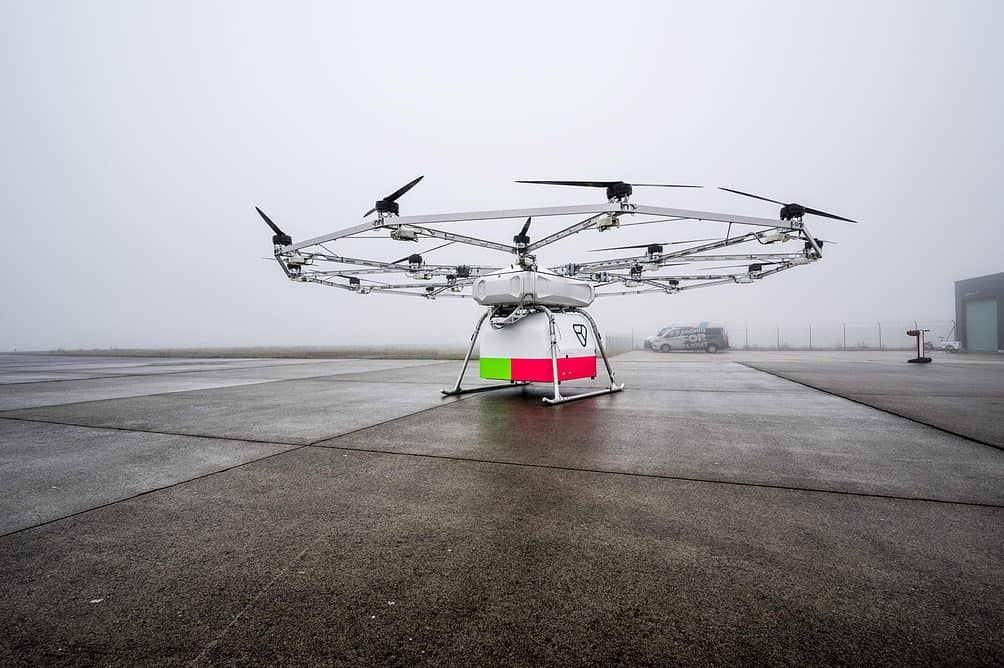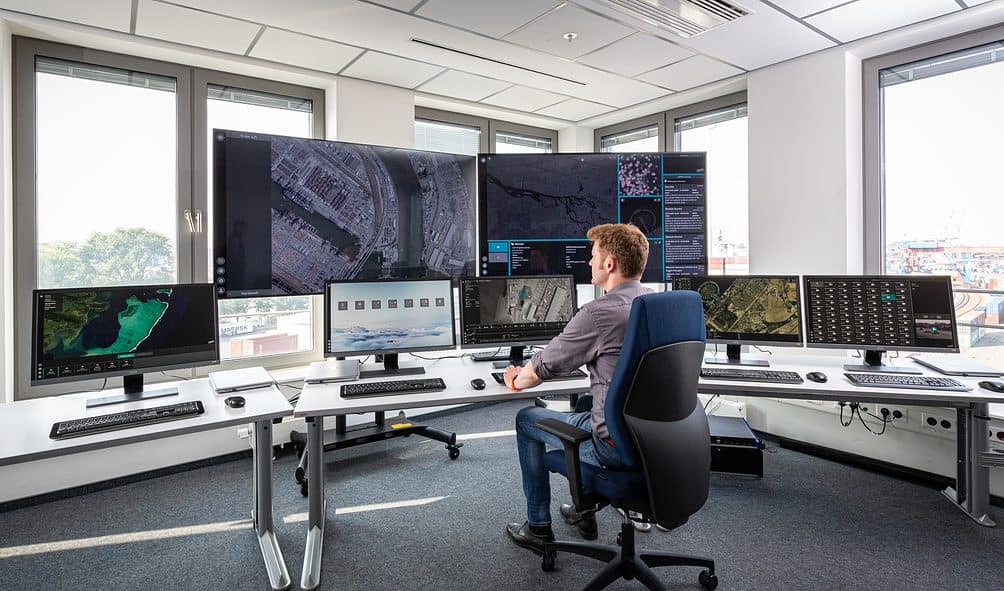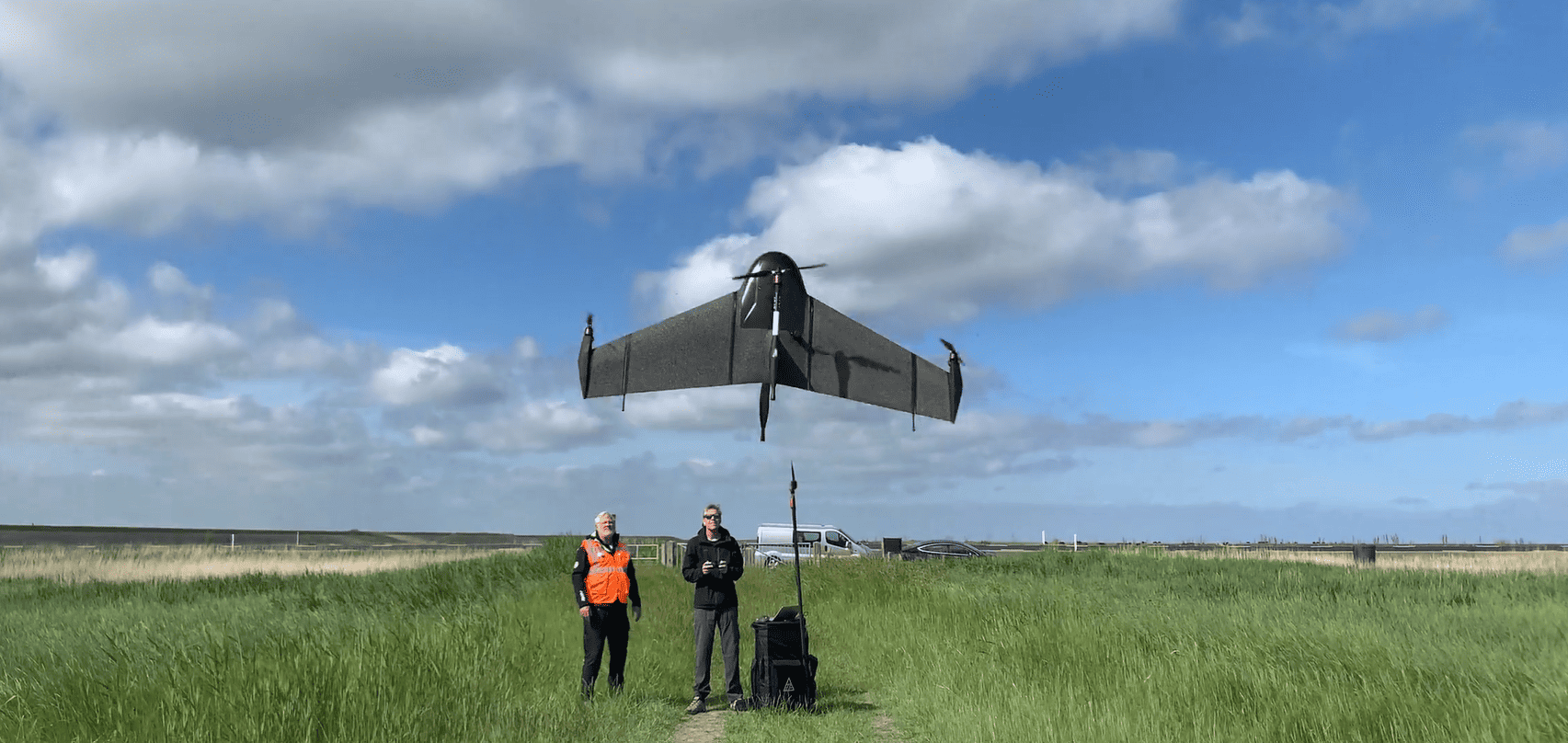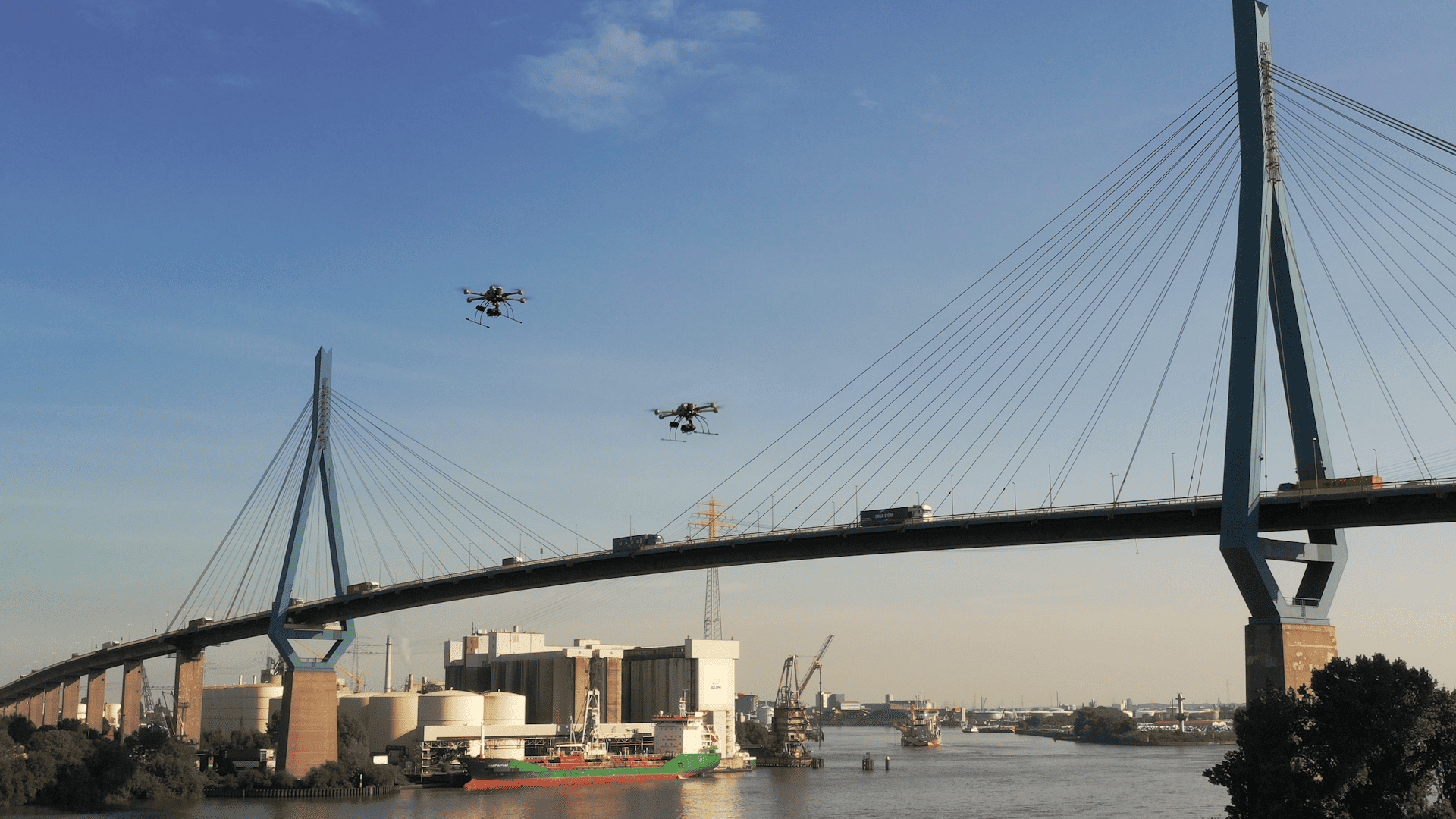
For many of us, drones are primarily toys. But they are able to do more and more. Civilian drones are increasingly taking on real tasks like transporting blood or medicine, inspecting railroad embankments, bridges, or industrial plants for damage, or collecting environmental data. This field will continue to grow in the coming years, despite the precarious overall economic situation.
In a recent study, for example, the German Association of Unmanned Aerial Vehicles expects the drone market to grow by 525 percent by 2030. By then, 126,000 commercial and around 721,000 private drones will be flying over Germany.
Large-scale German Aerospace Center test
Especially over large cities, drones, air cabs, helicopters, and airplanes will then have to move in the same airspace in a controlled manner. The EU has already issued a directive regulating this very issue, which will come into force on January 23, 2023. Scientists at the German Aerospace Center (Deutsches Zentrum für Luft- und Raumfahrt, DLR) have conducted practical tests at the Cochstedt research airport near Magdeburg to determine how air traffic management should work under such circumstances.

Under the umbrella of the “CORUS-XUAM” project, the researchers used a “Volocopter” cargo drone and a DLR helicopter to test various operational scenarios of the kind that could take place over cities in the near future. “CORUM-XUAM” stands for “Concept of Operations for European UTM systems – Extensions for urban air mobility.” The goal was to learn how drones and helicopters can best get out of each other’s way and how air traffic control can work for both. In addition to DLR, the German air navigation service provider DFS, its service subsidiary Droniq and air cab manufacturer Volocopter were also involved.

A special airspace for drones
Today’s air traffic control or air navigation services rest on two pillars. One pillar is an extensive set of rules and regulations for air traffic, prescribing flight paths, flight altitudes, takeoff and landing procedures, and also avoidance rules. The second pillar is constant radio contact between pilots and air traffic controllers on the ground. But this system is reaching its limits. Many drones are too small and fly too low to be detected by surveillance radars. Plus, their numbers are steadily growing and many drones will be autonomous. This will require a highly automated flight control system that complements conventional air traffic control and extends it into extremely low altitude ranges.

Photo: Thorsten Indra
DLR and European partners are working on the so-called “U-space”. In this space, drone flights will be guided automatically from takeoff to landing at the target point. A U-space is a demarcated area in the lower airspace of less than 120 meters above an urban environment. In this space, drone flights as well as those of air cabs, helicopters, or airplanes are monitored and coordinated. This is to ensure, similar to what already happens today, that a rescue helicopter can travel through it at any time.
Service providers
Primarily commercial and industrial drones will fly in U-spaces. The coordination of a U-space is handled by a U-space service provider. Users can register their flights through this service provider and monitor the flight itself. Here they get flight clearance and a safe flight route.
The U-space service provider offers the following services:
- Identification of the drone, which is equipped with an electronic license plate and sends its position.
- Authorization, flight clearance, and route planning.
- Information about current traffic and any flight restrictions in the U-space.
“During the CORUS-XUAM flight tests in Cochstedt, we took over in detail the provision of a U-space service that can detect and resolve route conflicts of a flight cab both in the planning phase and during active flight,” said Karolin Schweiger of the DLR Institute of Flight Guidance. “This ensures that the air cab can safely interact with spontaneously emerging and unpredictable road users such as rescue helicopters even while it is in the air.”
Urban scenarios in flight test
DLR scientists recreated two scenarios in Cochstedt. One simulated a connection between downtown Frankfurt and the major Rhine-Main airport. The second scenario recreated a drone flight connection between London City Airport and London Heathrow. For both scenarios, the experts defined positions to represent different vertiports. Registration, clearance, and planning of the individual flight routes were carried out via the digital network of the U-space service. Part of the flight tests also included alternate scenarios, for example, in the event that a rescue helicopter had to fly through or land in U-space.
Course corrections
The part of the rescue helicopter was played by a real ADAC (German Automobile Club) helicopter. In the individual scenarios, the scientists then tested different reaction options. In the “Frankfurt” scenario, the Volocopter drone had to avoid the helicopter using automatic course correctors. Above virtual London, the research teams took a different approach. This time, they had the drone fly more slowly to keep its distance from normal air traffic or, again, to avoid a helicopter. Flying at a slower speed also helps when it comes to making up for delays to the destination.
European U-spaces
The trials at the Cochstedt research airport are part of an entire series of similar tests throughout Europe. In Germany, there have already been other large-scale trials with a U-space. One example is a large-scale trial over the port of Hamburg. Between May 2021 and November 2021, DFS and Droniq conducted a U-space real laboratory together with partners from Hamburg. Participants included, for example, the Hamburg Port Authority, Hamburg Aviation, and the city’s economic authority. Similar to Cochstedt, the services important for a U-space were tested under real conditions. Drones thus operated for the first time over a 30-square-kilometer section of the Port of Hamburg in accordance with the requirements of the European Aviation Safety Agency EASA. The results will then be incorporated into the design of real U-spaces over cities.
Title photo above: A drone during a flight as part of the Port of Hamburg U-space real laboratory.







